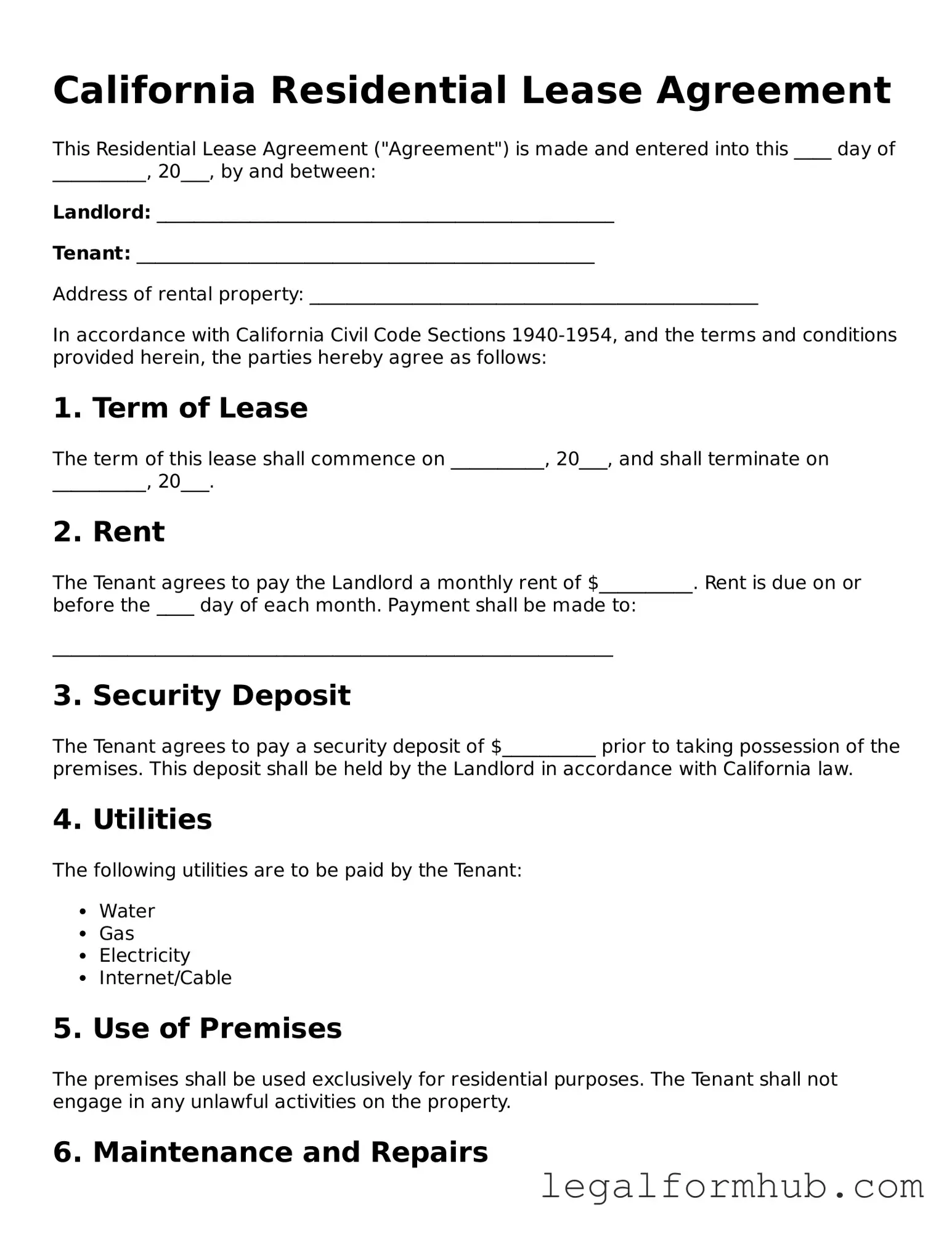The California Rental Application is a document that landlords use to collect information from prospective tenants. Similar to the Residential Lease Agreement, it outlines the terms of the rental process but focuses primarily on the tenant's qualifications. It typically includes sections for personal information, employment history, and references. Both documents serve to establish a relationship between landlord and tenant, but the Rental Application is more about screening tenants before a lease is signed.
The Lease Addendum is another important document that complements the Residential Lease Agreement. It allows landlords to add specific terms or conditions to the existing lease without rewriting the entire agreement. For instance, if a landlord wants to implement a no-pet policy after the lease has been signed, they can create an addendum to clarify this new rule. Both documents work together to ensure that all terms are clearly understood and agreed upon by both parties.
A Rental Agreement is quite similar to a Residential Lease Agreement but usually covers a shorter time frame. While a lease typically spans a year or more, a rental agreement might be month-to-month. Both documents outline the rights and responsibilities of landlords and tenants, including payment terms and maintenance responsibilities. The main difference lies in the duration and the flexibility offered by a rental agreement.
The California Articles of Incorporation form is an integral part of establishing a corporation, providing essential details about the company's structure and purpose. Similar to lease agreements that outline terms between landlords and tenants, the Articles of Incorporation lays out the foundational elements necessary for the legal recognition of a business. Entrepreneurs looking to formalize their ventures will need to fill out this important document, often referred to as the Certificate of Incorporation, before moving forward with their corporate plans.
The Move-In Checklist is a document that helps both landlords and tenants assess the condition of the rental property before the lease begins. Similar to the Residential Lease Agreement, it serves to protect both parties by documenting the state of the property at the start of the tenancy. This checklist can prevent disputes over damages when the lease ends, ensuring that both parties have a clear understanding of the property's condition.
The Security Deposit Agreement outlines the terms regarding the security deposit, which is often part of the Residential Lease Agreement. This document specifies the amount of the deposit, the conditions under which it may be withheld, and the timeline for its return. Both documents aim to clarify financial responsibilities and protect the interests of both landlords and tenants.
The Notice to Enter is a document that landlords use to inform tenants of their intention to enter the rental property. This is similar to the Residential Lease Agreement in that it establishes the rights of both parties regarding access to the property. While the lease outlines general rules, the Notice to Enter provides specific information about when and why a landlord may need to access the unit, ensuring that tenants are aware and prepared.
The Lease Termination Notice is a crucial document that informs a tenant or landlord of the intention to end the lease agreement. This document is similar to the Residential Lease Agreement in that it outlines the obligations and procedures for ending the tenancy. It provides clarity on timelines and requirements, helping both parties navigate the end of their rental relationship smoothly.
The Pet Agreement is a specialized addendum that outlines the rules and responsibilities associated with having pets in a rental property. While the Residential Lease Agreement may include a general pet policy, the Pet Agreement can provide more specific details. This document helps ensure that both parties are aware of the expectations and conditions related to pet ownership, thus preventing misunderstandings during the lease term.
The Sublease Agreement allows a tenant to rent out their unit to another person, with the landlord's permission. Similar to the Residential Lease Agreement, it outlines the rights and responsibilities of all parties involved. Both documents aim to protect the interests of the landlord while ensuring that the tenant's rights are respected. The Sublease Agreement provides a framework for this arrangement, ensuring that all parties are aware of their obligations.
The Rent Receipt is a document that landlords provide to tenants as proof of payment. While the Residential Lease Agreement outlines the payment terms, the Rent Receipt serves as a record of each transaction. This document is important for both parties, as it helps tenants keep track of their payments and provides landlords with a clear record for accounting purposes.
